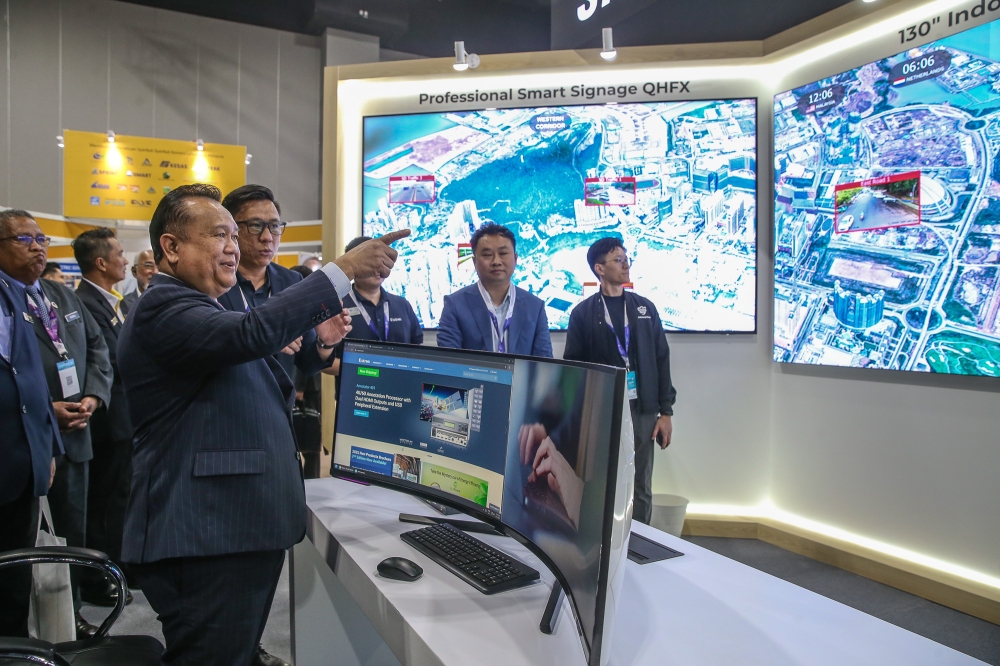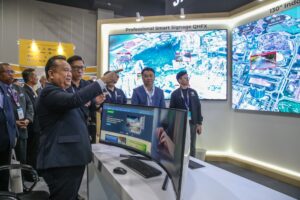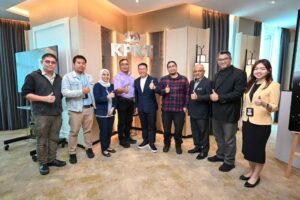KUALA LUMPUR, Nov 3 — Want to see a piece of a satellite? Come to the Malaysian Road Maintenance Convention (MRMC) and Roads & Traffic Tech Expo (MtArtte) at Malaysian International Trade and Exhibition Centre (Mitec).
Here you’ll find a one-to-one mock-up of Uzmasat-1, a collaboration between Uzma and a leading Earth observation data collection company, Satellogic.
You can visit the Uzma booth at Mitec to see it up close.
The life-sized replica represents the satellite launched earlier this year via SpaceX from California and has drawn curious onlookers eager to learn how local innovation is reaching space.
Equipped with a multi-spectral camera capable of capturing 5,000 hectares in a single image, the satellite marks a major milestone in Malaysia’s move toward self-reliant, real-time geospatial monitoring.
In comparison, standard drones and cameras can take up to 300-500 hectares.
Representatives explained that Uzmasat-1 is already in orbit and serving major clients, including Petronas, the Roundtable on Sustainable Palm Oil (RSPO), and Sarawak Energy. Discussions are also ongoing with JKR to enhance slope and road monitoring.
“This is our Malaysian first EO satellite,” one representative said.
“It’s more for mapping and monitoring — especially slope stability, agriculture, and infrastructure projects.”
Uzma’s presence at the expo highlights the increasing role of satellite technology in road safety, infrastructure management, and environmental monitoring.
Unlike communication satellites such as Measat, Uzmasat-1’s imaging sensors provide ground-level detail crucial for planning and disaster prevention.
“Malaysia doesn’t have its own imaging satellite,” the exhibitor added. “We used to rely on foreign data now we’re building the capability ourselves.”
At another exhibit, a large airplane takes up most of Quantum Systems’ space. The 5-foot beauty called Trinity Pro integrates the latest Quantum Skynode autopilot technology using a Linux mission computer.
“The entire plane can be folded and dismantled to fit in a suitcase too,” said the booth attendant.
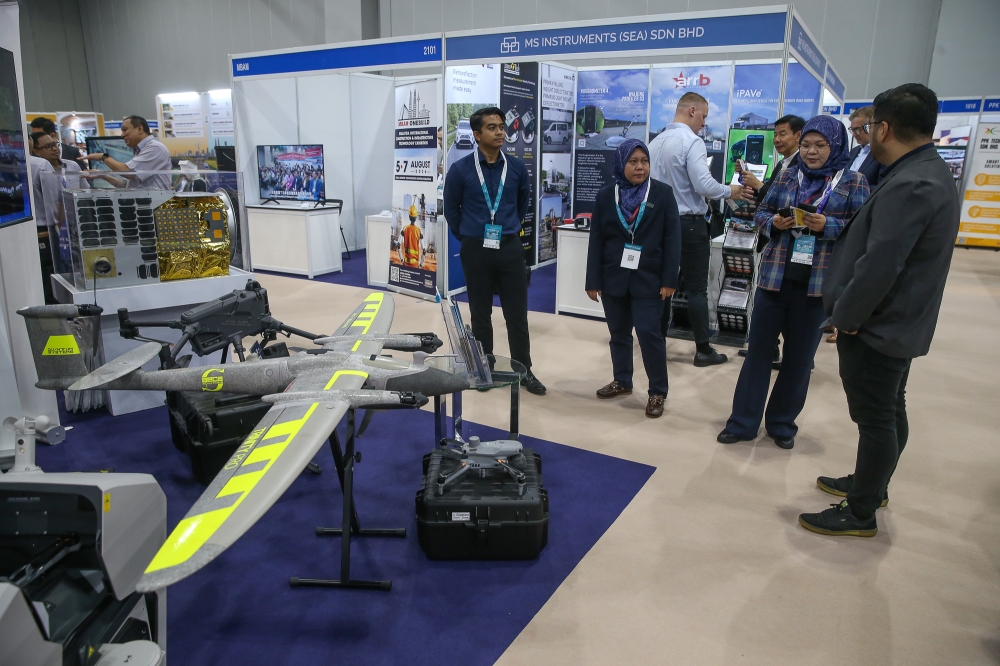
Trinity Pro integrates the latest Quantum Skynode autopilot technology using a Linux mission computer. — Picture by Yusof Mat Isa
“It’s only five kilogrammes and is modular and comes with a backpack. Can put it behind a Hilux and travel easily. Great for not only roads but for estates like palm oil. It allows for 3D mapping, slope and terrain monitoring and all the information gathered helps the end user make better decisions and enhances safety as it can also be used for monitoring with the self-docking feature,” he explained.
Meanwhile there are also traffic light installers with the actual traffic light, monitoring systems and the CCTC cameras on display.
RTB GmbH & Co.KG are a German based company who’ve been in the traffic business for decades.
They showcased the new variation for push buttons which is bright yellow, softer than the usual steel pusher and much more durable.
Called the Type PiT, the pilot signal is actuated via the central electronics for the acoustic unit. Users simultaneously hear the pilot signal from the loudspeaker and push button so that it is easier to find the traffic light mast.
Samsung is at the expo too, displaying the biggest TVs in its arsenal — a whopping 130-inch model priced at around RM250,000. These TVs are typically used by road ministries or in large control centres, as they can display feeds from hundreds of monitors.
A 98-inch TV, mostly used in the Prime Minister’s Office, costs RM20,000, while the 115-inch TV is a new model featuring LED panels, priced at RM80,000.
Samsung also showcased its new G9 57-inch curved monitor, costing close to RM10,000.
“With the G9 you can use two separate computers on one monitor. It’s a work station,” said one of the Samsung employees.
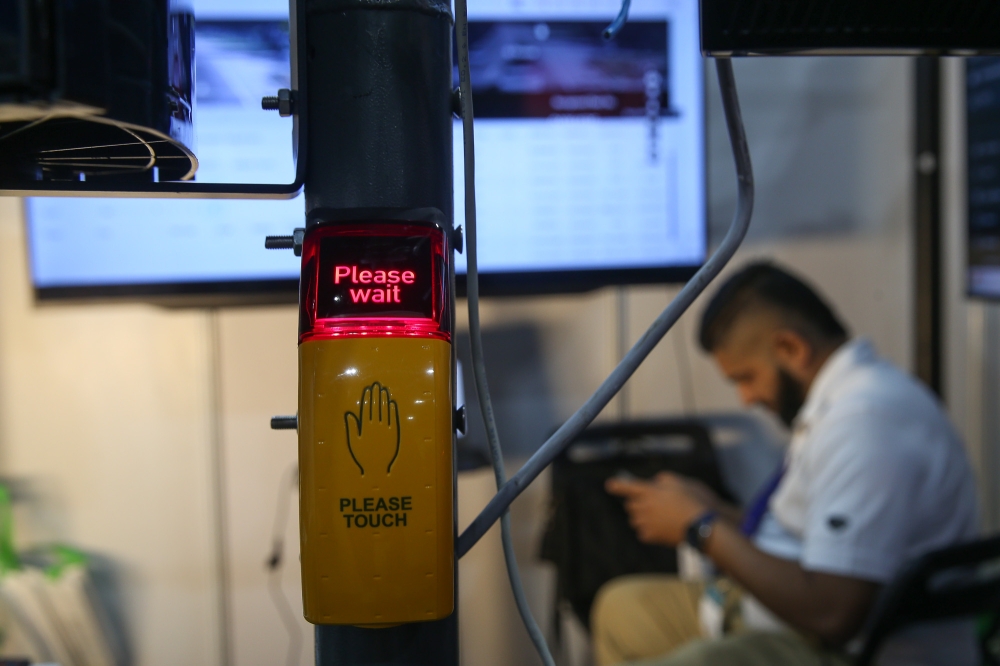
An equipment on display at the Road & Traffic Tech Expo (MyArtte) and the Malaysian Road Maintenance Convention (MRMC) 2025. — Picture by Yusof Mat Isa
Apart from that, anything related to roadworks, traffic, safety, and beautification can be found at the expo.
Malay Mail saw companies showcasing innovative light fixtures equipped with CCTV cameras and energy-saving bulbs, as well as slope and highway maintenance companies promoting safety. One of the most popular booths was Touch ‘n Go’s.
Here, the attendants explained that the company was showcasing its latest road safety and monitoring system, which provides immediate response and feedback.
In addition, Touch ‘n Go unveiled a new card technology project, where the Touch ‘n Go card can be used as a business card, building access card, and payment card too.
This technology isn’t available to the masses yet, but the company is working on making it accessible to everyone.
